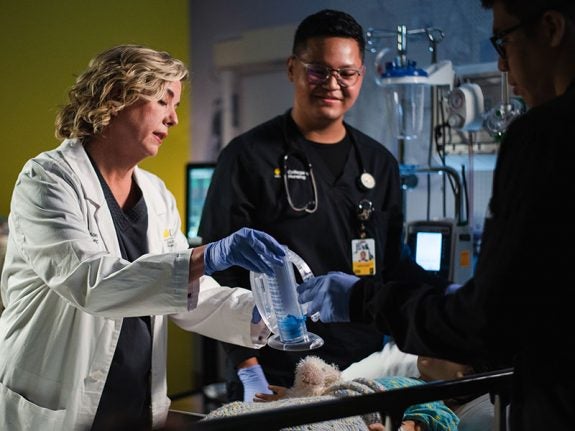Preventative Screenings That Can Save Your Life – And How to Make the Most of Them

“Screenings identify chronic complications early so that patients can begin self-management and have healthier outcomes,” says Jaqueline LaManna, a professor in the College of Nursing at the University of Central Florida.
Less important but still significant, there’s the incredible cost savings to consider: The U.S. Office of the Surgeon General reports that $3.7 billion in medical costs could be saved in the U.S. each year if preventative screenings increased by 90 percent.
Thanks to the Affordable Care Act, the cost of preventative screenings is no longer a barrier for Americans who need and deserve to be screened. The ACA requires that health insurers cover every type of preventative screening that has received an A or B grade from the U.S. Preventative Services Task Force, which conducts systematic reviews of such tests and their value based on the newest research.
Now that preventative health screenings are more accessible than they’ve ever been, where should you start? In many respects, that depends on your age, gender, diet, lifestyle and family history. Your doctor can help determine which specific tests are necessary today, to ensure that you remain healthy. The five tips below will help you make the most of your preventative health care by alerting you to screenings you may not have heard about, and by helping you mine even more valuable information from the screenings you do receive.
1) Discover specific risks your DNA can reveal.
If you could look directly into your own DNA to get a better sense of what diseases you, specifically, may tend toward, wouldn’t you do it? Genetic screenings allow you to do just that, and many are now covered by insurers thanks to an ACA requirement. One of these screenings, for example, tests for mutations in the BRCA1 and BRCA2 genes, which are associated with higher instances of female breast and ovarian cancers.
Though the increased affordability of such screenings has shrunk the disparity between those who can and can’t afford them, an unfortunate fact remains: A shortage of geneticists means that not everyone who should have these tests are able to travel to a provider offering them. People in rural parts of the country are most likely to be negatively impacted by the shortage — a factor that the ACA requirement can’t account for. If you do the research and find that you have access to a geneticist equipped to do a genetic screening, take advantage of your good fortune and make an appointment.
2) Learn about and correct for the risks associated with childhood obesity.
Another of the preventative screenings highly recommended by the U.S. Preventative Services Task Force is one that tests the body mass index (BMI) of children to determine whether they officially fall into the category of “obese.” Childhood obesity is linked to health problems such as diabetes, hypertension, asthma, joint problems and cancer.
The Task Force suggests that families with obese children should access help in designing long-term weight management plans for obese children. Again, such programs are covered under the ACA — but they are in woefully short supply. Still, parents whose children are found to be obese can consider themselves empowered to do their own research about the environmental, behavioral and dietary causes of obesity and the ways to fight it.
3) Understand the personal health implications involved with becoming pregnant (or getting someone pregnant).
Only half of pregnancies are planned in the U.S., which means that many new parents discover that a child is on the way before they’ve learned about how chronic illnesses, medications or other issues can lead to complications with the pregnancy. For this reason, while you are of reproductive age, it’s smart to regularly assess any risks or complications your medications or chronic illnesses could cause during a pregnancy before conceiving.
LaManna points to a current campaign called “Every Woman, Every Time” that is building attention around this issue.
“That means any woman of reproductive age should be looked at from the potential that she could be pregnant or could become pregnant every time she has a healthcare visit,” LaManna says. “It’s a question that should be asked whether she goes in for strep throat or a urinary tract infection.”
She adds that the failure to do so could lead to contraindications and other issues with medicines that could harm a growing fetus or allow untreated chronic conditions to persist that could have similarly harmful effects.
4) Don’t discount diabetes.
Diabetes is another illness that can be carefully managed once a patient is given the diagnosis and the necessary treatment information — but, of course, you have to know you have diabetes before that can happen. Doctors screen for diabetes using a blood sugar test, which they generally recommend for patients starting at age 45, and every three years thereafter.
LaManna says it’s important to note that sometimes groups disagree on these age and frequency recommendations; in this case, the American Diabetes Association board of directors have made clear they believe these screenings should start earlier. On an individual level, it’s a good idea to talk with your doctor about what advice best applies to you.
5) Work with your doctor to understand your personal risks.
General guidelines about how often you should undergo preventative screenings — and starting at what age — are written for people with low to medium risk. Your risks may be higher depending on how prevalent certain illnesses are within your family, as well as many other factors, including how healthfully you eat, whether you smoke or binge drink regularly, how often you exercise, and much more. With a solid understanding of your family history, you and your doctor can best determine when you should get screened for signs of prostate cancer, breast cancer, diabetes, hypertension and other diseases.
“It’s very important for people to understand, to the best of their ability, what their family’s health history is,” says LaManna. “And it’s important for providers to ask. You can’t apply guidelines for low- to moderate-risk people to those who have increased risk.”
That said, if your risk for a given illness is low, that doesn’t mean you’re in the clear and don’t need to worry about regular screenings — it only means you should follow the standard guidelines regarding screening frequency and the age at which you should begin them. Remember: Screenings are important in the first place because neither you nor your doctor can predict the future of your health.
Often, the most intimidating part of working preventative screenings into your life is doing the research to decide which screenings you should schedule today, and which you can safely put off. But it’s all likely to feel more worthwhile if you consider what that research can help you avoid — and what it can help you save.
UCF’s Online Healthcare Degrees
- Autism Spectrum Disorders
- Executive Master of Health Administration, EMHA
- Forensic Science, MS
- Fundraising
- Gender Studies
- Health Informatics and Information Management, BS
- Health Services Administration, BS
- Healthcare Simulation
- Healthcare Systems Engineering Certificate
- Healthcare Systems Engineering, MS
- Integrative General Studies, BGS
- Interdisciplinary Studies – Diversity Studies Leadership Track, BA
- Interdisciplinary Studies, BA/BS
- Master of Public Administration, MPA
- Master of Science in Healthcare Informatics
- Master of Social Work Online
- Nonprofit Management
- Nonprofit Management, MNM
- Nursing Education
- Nursing Practice, DNP, Advanced Track
- Nursing Practice, DNP, Executive Track
- Nursing, BS
- Nursing, BSN to PhD
- Nursing, MSN
- Nursing, PhD
- Project Engineering
- Psychology, BS
- Public Administration
- Research Administration Certificate
- Research Administration, MRA
- Systems Engineering







